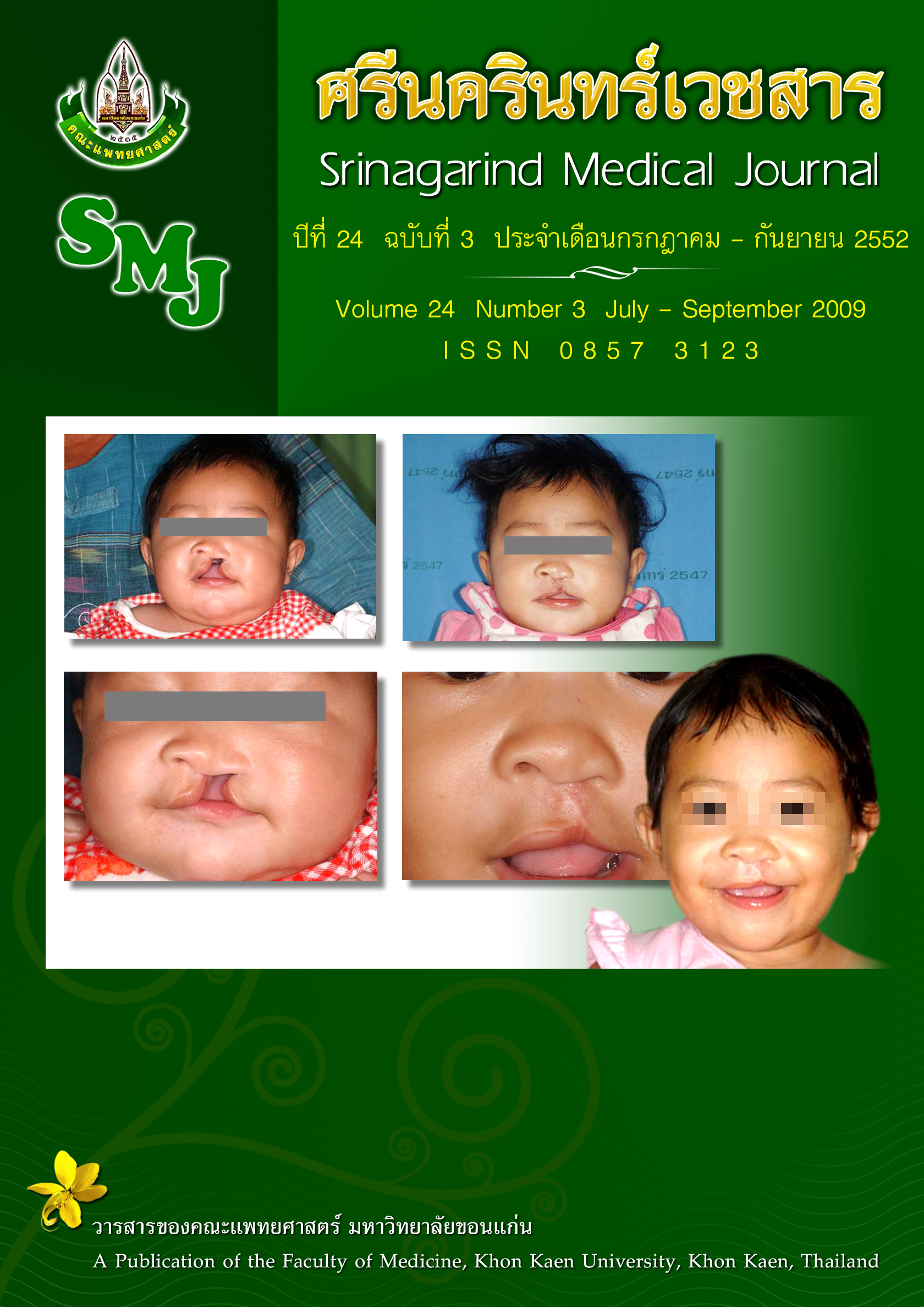Cleidohyoid Muscle In Human: A Case Report
บทคัดย่อ
Background and objective: The surgical approaches of the neck region are very frequent. The examples are thyroidectomy, tracheotomy, and mass removal including lymph nodes. Therefore, the surgeons have to be aware of anatomical variations in the neck including the unseen and unreported ones. The present study was to report the cleidohyoid muscle in Thai cadavers as a first case in the Northeast Thailand.
Methods: Re-dissection surveys had been performed on the embalmed, legally donated cadavers to Department of Anatomy, Faculty of Medicine, Khon Kaen University from 1974 to 2008.
Results: The cleidohyoid muscle was observed in one male out off 939 cadavers. This muscle is present in birds and disappears somewhere along the course of evolution. The muscle helps in the process of feeding. It connects the pectoral girdle, specifically the clavicle, to the tongue skeleton especially the hyoid bone, so that the swallowing of food is possible. The incidence of this variation is very rare. It is 0.01% in this study. The developmental history and the surgical aspect of the muscle were presented.
Conclusion: The occurrence of the cleidohyoid muscle in the densely packed region as in the neck requires an extremely careful procedure of the surgeons.
Key words: Gross anatomy variation, cleidohyoid muscle, mechanism of feeding,



